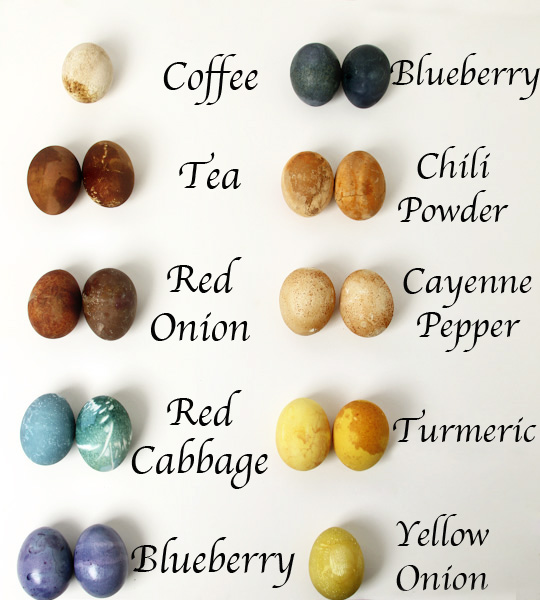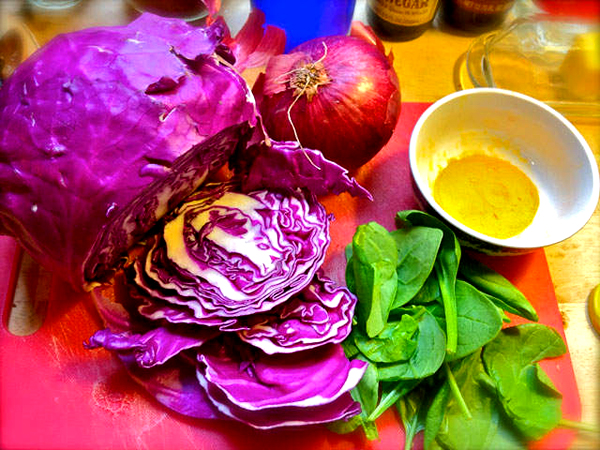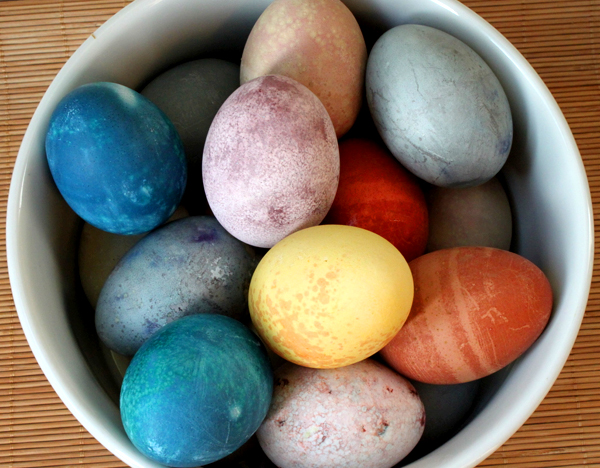http://www.blogger.com/blogger.g?blogID=3435338755252173491#editor/target=post;postID=1973133765326169989
Natural Dyed Easter Eggs
“I decided to try my hand at making Easter Eggs using only natural ingredients this year. I pulled food and spices out of the cabinet and fridge and got busy trying different things to see what works and what doesn’t.
I remember my mom and grandma using red onion skins to dye eggs when I was child, but I don’t remember how they dyed the eggs using them. A little research and I had an idea of how to go about dyeing the eggs using natural ingredients.” -from “Natural Dyed Easter Eggs”

Twinkle’s Kitchen: All-Natural Easter Egg Dye Recipe
Dyeing eggs for the family Easter egg hunt was always a big event. Dozens of eggs were boiled and prepared by my grandmother the day before her horde of wild grandchildren arrived ready to claim their dozen eggs to color.And like many others, Paas was our traditional method of egg dyeing.
This year I started something new in our house that falls more inline with my DIY-style living agenda. And you can do it, too.
I wanted to create my own dyes. I consulted a few friends, a few websites and by trial and error discovered some great ways to make all-natural color dyes.
Not only are these dyes better for my family than the artificial ones, they are also more fun to create. It turned out to be a great lesson in science and a wonderful creative project for the kids who discovered which plants or items created the best colors. I hope this becomes our new family tradition. -from “Twinkle’s Kitchen: All-Natural Easter Egg Dye Recipe”

Natural Easter Egg Dyes
“Appreciate the vivid colors and natural beauty of fruits, vegetables and spices: dye your Easter eggs with everyday foods rather than boxes of chemical colorings. This is a great family project and learning experience. Though it will take a little more planning than your basic Easter egg dye box, I think you will find the extra time well worth it. Even though I’m a grown-up, I felt a child-like excitement watching the eggs turn colors in bowls of cabbage, spinach, blueberries and more!With some of the dyes, it is best to boil the eggs with the natural substance to achieve the most vibrant color. I have indicated these below with an asterisk. With others, you can hard-boil the eggs first and then soak them in the respective natural dye.
For more vibrant colors, place the sealed containers of natural dyes in the refrigerator and let the cooked eggs soak overnight. Adding vinegar to the boiling water will also help make the colors brighter. (One exception is with onion skins; do not add vinegar to the onion skins.) If you want shiny eggs, rub them with some vegetable oil once the dye is dry.” -from “Natural Easter Egg Dyes – Itsy Bitsy Foodies”

No comments:
Post a Comment